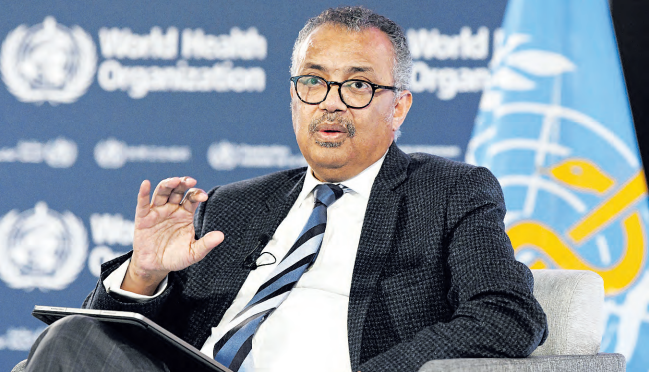
Kenya disease outbreaks: 2007 to 2022
In 2012 only one county reported an outbreak, but in 2022 all the 47 counties reported outbreaks.
Kenya continues to rank among the 30 nations with the highest TB burden.
In Summary

Kenya is one of the countries making the most progress in the fight against tuberculosis.
The World Health Organisation’s Global Tuberculosis Report said the nation is extremely close to reducing the incidence of tuberculosis by at least 50 per cent.
This represents the global End TB Strategy’s 2025 milestone. At least 124,000 Kenyans were diagnosed with TB last year, according to the Ministry of Health.
Kenya is also on track to meet another milestone in 2025: reducing HIV-Aids deaths, with tuberculosis contributing.
“About 13 countries are estimated to have achieved reductions of 50 per cent or more between 2015 and 2023, including six high TB burden countries (Kenya, Mozambique, Nigeria, Uganda, the United Republic of Tanzania, and Zambia,” the report states.
The report said last year TB killed 8,000 HIV-positive Kenyans and 15,000 HIV-negative Kenyans. Kenya continues to rank among the 30 nations with the highest TB burdens in the world, and these figures are still incredibly high.
Nevertheless, Kenya is no longer among the top 30 nations with the highest rates of multidrug-resistant tuberculosis.
“The fact that tuberculosis still kills and sickens so many people is an outrage, especially since we have the tools to prevent, detect, and treat it,” said Tedros Adhanom Ghebreyesus, WHO director general.
“WHO urges all countries to follow through on the concrete commitments they have made to expand the use of those tools and end tuberculosis.
Around 8.2 million people worldwide received a new TB diagnosis in 2023, which is the highest number since WHO started global TB monitoring in 1995.
With a significant rise from the 7.5 million recorded in 2022, TB surpassed Covid-19 to reclaim its position as the most common infectious disease killer in 2023.
Despite ongoing obstacles like severe underfunding, WHO Global Tuberculosis Report 2024 shows mixed results in the global fight against TB.
The overall number of TB-related illnesses increased marginally to an estimated 10.8 million in 2023, despite a decline in TB-related deaths from 1.32 million in 2022 to 1.25 million in 2023.
In 2023, the gap between the estimated number of new TB cases and those reported narrowed to about 2.7 million, down from Covid-19 pandemic levels of around 4 million in 2020 and 2021.
This comes after significant national and international efforts to recover from TB service disruptions caused by Covid-19.
For those with HIV, the coverage of TB preventive treatment has been maintained, and it keeps getting better for household contacts of those with TB diagnoses.
However, multidrug-resistant TB remains a public health crisis. Currently, 68 per cent of patients with multidrug-resistant or rifampicin-resistant tuberculosis have successfully completed treatment. TB is prevented and treated with the drug rifampicin.
However, according to the report, only 44 per cent of the estimated 400 000 individuals who had MDR/RR-TB received a diagnosis and treatment in 2023. Global funding for TB care and prevention fell even more in 2023 and is still far short of the goal.
There were severe funding shortages in low- and middle-income countries (LMICs), which are responsible for 98 per cent of the TB burden.
The biggest bilateral donor for tuberculosis is still the US government. On the other hand, the Global Fund to Fight Aids, Tuberculosis, and Malaria (the Global Fund) provides international funding for the TB response, particularly in developing nations.
Estimates of the proportion of
TB-affected households that incur
catastrophic costs (above 20 per
cent of yearly household income)
to obtain TB diagnosis and treatment in all LMICs are presented in
the report for the first time. These
indicate that half of TB-affected
households face such catastrophic
costs.
Be part of an exclusive group of enthusiasts! Get fresh content, expert advice and exciting updates in your inbox with our health newsletter.

In 2012 only one county reported an outbreak, but in 2022 all the 47 counties reported outbreaks.